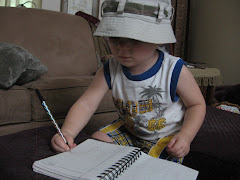1. BIBLIOGRAPHY
McKissack, Patricia and Moss, Onawumi Jean. PRECIOUS AND THE BOO HAG. Illustrated by Kyrsten Brooker. New York: Atheneum Books for Young Readers, 2005. ISBN 9780689851940.
2. PLOT SUMMARY
Precious has a stomachache, but because it is corn planting time, Mama wasn’t able to stay home with her since every hand was needed in the fields. Precious assures Mama that she’s a big girl and will be fine. After dozens of dos and don’ts, Mama gives one final instruction – don’t let anyone into the house. As Brother heads out, he pulls Precious aside and warns her about Pruella, the Boo Hag, who will do whatever she can to get Precious to let her into the house. Brother’s last statement is, “Just remember this: No Boo Hag can get inside your house, less’n you let her in.” Is there really such a thing as a Boo Hag? Precious believes her brother was trying to play a joke on her and tell her stories until strange things start to happen and strange people start showing up at Precious’s house while everyone is gone. Is the Boo Hag real, and will Precious be tricked into letting her in?
3. CRITICAL ANALYSIS
From the legends of South Carolina’s Gullah culture, the Boo Hag is known to be a scary witch-like creature who will steal the skin of an unsuspecting victim to use during the night. McKissack and Moss create an original tale about a Boo Hag. Is it real? The story is engrossing as Precious first realizes that her brother has tricked her with yet another one of this stories, but she begins to change her mind as unusual things happen throughout the day to make her believe that a Boo Hag might be real after all. The language used is dialectical without becoming stereotypical of either African American or Southern speech patterns. It has the feeling of a folktale while still sounding authentic and believable. Mama instructs Precious by saying, “You need us, come a-running” and Brother describes Pruella, their neighborhood Boo Hag, as tricky and scary, “and she tries to make you disobey yo’ mama.” When Precious’s friend Addie Louise comes by to play jacks, Precious notices, “It looks like her, it walks like her, but it sure don’t talk like her.” Precious is able to hold her ground, which is very satisfying to the reader. As Precious tells her brother, “like you told me, a Boo Hag aine none too smart.”
The song Precious repeats when reminding herself not to let anyone in is catchy and will probably be heard in school hallways by young children who have heard the story a time or two. Perhaps through McKissack’s partnership with storyteller Moss, this book reads aloud with a flair for language that is not only fun to listen to, but fun for the one reading aloud as well.
Brooker’s art is a mix of oil paint and collage. The people are not rendered in a realistic way, but the technique makes Pruella the Boo Hag feel larger than life, and just a little bit scary. Facial expressions are exaggerated, but many of the pieces are “framed” in a realistic paintings of knotty wood with peeling paint. One of the pieces even includes some of Mama’s specific dos and don’ts, pulling the art directly into the story. The exaggerated characters are respectful, and they are not done in stereotypical ways.
Precious and the Boo Hag was a Charlotte Zolotow Honor Book for 2006, and was on the American Library Association’s 2006 Notable Children’s Books list.
4. REVIEW EXCERPT
*Publishers Weekly: “Brooker conveys the rowdy, larger-than-life goings-on in playfully exaggerated, stylized collage art which features a range of textures. The story's lively language, pleasing cadence and effective repetition of Precious's chant make this a buoyant read-aloud.”
*Booklist: “With the grand feel of a folktale, this lively story speaks to choosing right in a world full of temptation and peril.”
*Kirkus (Starred Review): “Brooker underscores the story's rustic flavor by surrounding most of her terrific paint and collage scenes with a peeling board frame and gives pigtailed Precious a winningly scared but resolute look.”
5. CONNECTIONS
• Older reader might like to read other stories about Boo Hags. Find one with a read aloud at http://americanfolklore.net/folklore/2010/05/boo_hag.html
Compare Precious’s Boo Hag encounter to the one Bobby Hansen has.
• Compare various versions of Boo Hags as found on the internet. How is McKissack’s and Moss’s Boo Hag different from other descriptions?
• Boo Hags are sometimes compared to the legend of the Vampire. How do Boo Hags compare to Vampires?
• Notice how the art uses collage. Create a piece of art that primarily uses crayons, pencils, or paints, and then add elements that are cut out and glued on to make unusual, original art.
GUEST POST: Chris Baron on SPARK
7 months ago










